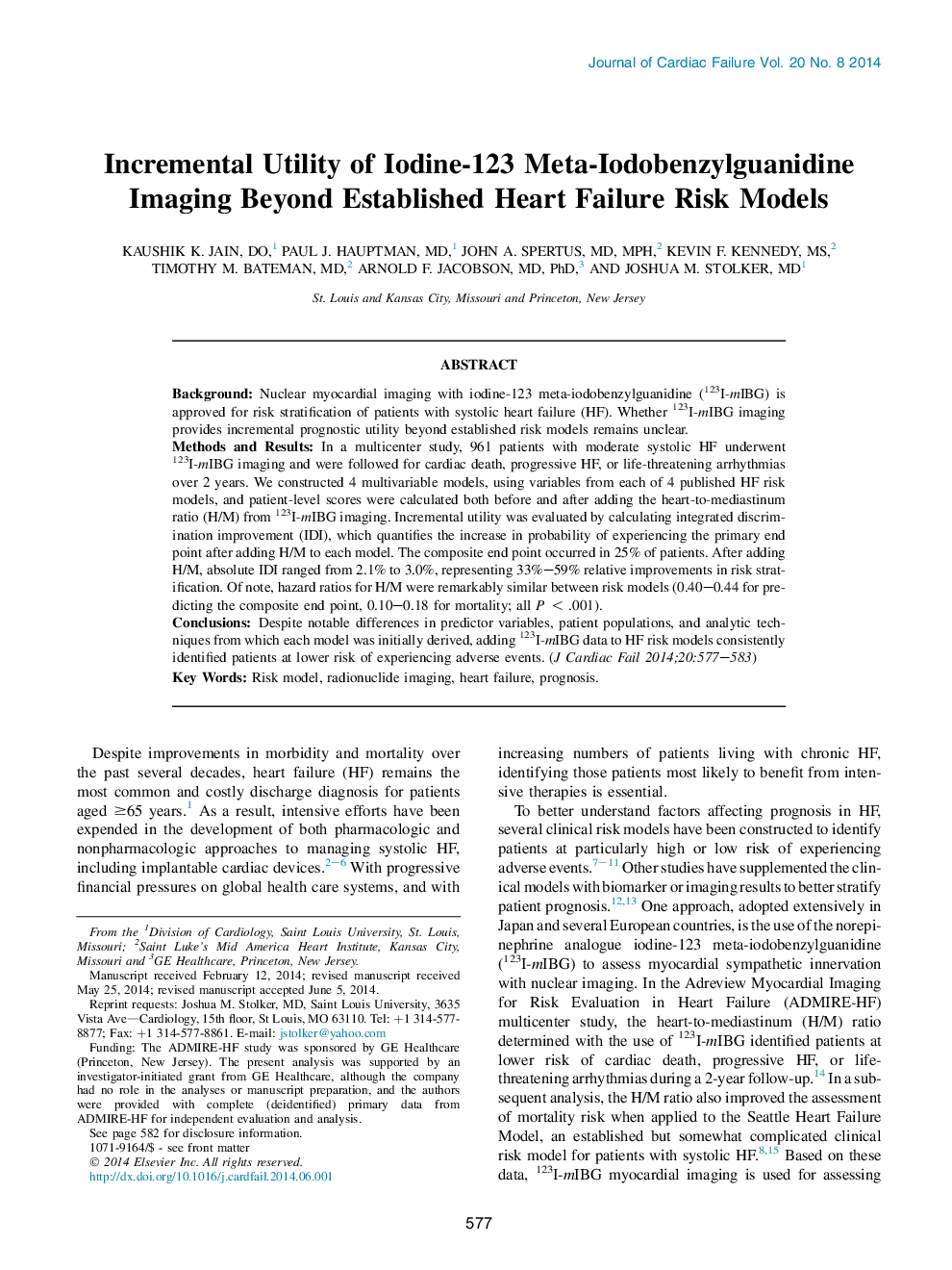| کد مقاله | کد نشریه | سال انتشار | مقاله انگلیسی | نسخه تمام متن |
|---|---|---|---|---|
| 2959009 | 1178308 | 2014 | 7 صفحه PDF | دانلود رایگان |
• Nuclear myocardial imaging has prognostic value in moderate heart failure (HF).
• Risk stratification improves when imaging data are added to existing risk models.
• Nuclear imaging is particularly useful for identifying lower risk HF patients.
• Findings are similar for a composite clinical end point, or for mortality alone.
• This may help identify HF patients in whom aggressive treatments are not warranted.
BackgroundNuclear myocardial imaging with iodine-123 meta-iodobenzylguanidine (123I-mIBG) is approved for risk stratification of patients with systolic heart failure (HF). Whether 123I-mIBG imaging provides incremental prognostic utility beyond established risk models remains unclear.Methods and ResultsIn a multicenter study, 961 patients with moderate systolic HF underwent 123I-mIBG imaging and were followed for cardiac death, progressive HF, or life-threatening arrhythmias over 2 years. We constructed 4 multivariable models, using variables from each of 4 published HF risk models, and patient-level scores were calculated both before and after adding the heart-to-mediastinum ratio (H/M) from 123I-mIBG imaging. Incremental utility was evaluated by calculating integrated discrimination improvement (IDI), which quantifies the increase in probability of experiencing the primary end point after adding H/M to each model. The composite end point occurred in 25% of patients. After adding H/M, absolute IDI ranged from 2.1% to 3.0%, representing 33%–59% relative improvements in risk stratification. Of note, hazard ratios for H/M were remarkably similar between risk models (0.40–0.44 for predicting the composite end point, 0.10–0.18 for mortality; all P < .001).ConclusionsDespite notable differences in predictor variables, patient populations, and analytic techniques from which each model was initially derived, adding 123I-mIBG data to HF risk models consistently identified patients at lower risk of experiencing adverse events.
Journal: Journal of Cardiac Failure - Volume 20, Issue 8, August 2014, Pages 577–583
